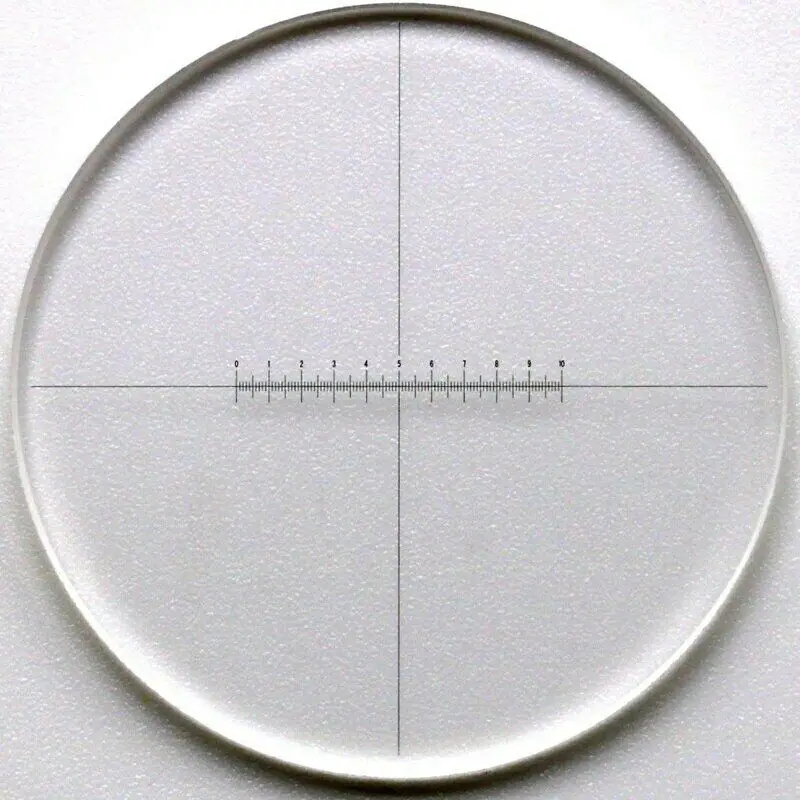
As a critical component in optical devices, a glass reticle needs to be precisely manufactured for optimal performance.
The role of the glass reticle spans different industries but is generally used for one of three things—aiming, targeting, or measuring. Although the patterns of the fine lines built into these optical device eyepieces vary by use case, they need to be as precise as possible to achieve optimal accuracy.
For weapon sights or non-weapon measuring instruments, the sets of patterns used provide visual measurement and calibration that impact the instrument’s functionality. In addition to the importance of the material used (in this case, glass) and patterns etched, where the reticle is installed also matters. The focal plane is where these reticles are typically installed within a telescope or scope. Some scopes consist of the first focal plane (FFP) or second focal plane (SFP), which changes the reticle functionality.
However, to fully understand the role of a glass reticle in optical devices, we’ll need to break them down by type.
Reticles are necessary for the functionality of weapon sights or scopes. In many cases, wire reticles made of platinum or tungsten (historically made from spider silk) are still used in rifle scopes. However, glass reticles achieve greater accuracy and measurement. The etchings, usually made by precision photolithography, are often more accurate, allow for multiple crosshair variations, are practically indestructible, and can be applied to complex scopes.
For both systems, the placement and lens security (with bonding through lock rings, glues, and screws) impact the overall accuracy of the reticle. Knowing this and the importance of precise etching, Photo Solutions provides custom reticles up to 2um resolution for scopes.
The crosshair variations made with glass reticles in rifle scopes also apply in telescopes. These include patterns such as fine and duplex crosshairs, German reticle, target dot, circle, old and modern rangefinding, and SVD-type that vary by application. In general, these eyepieces are a critical part of the telescope’s overall functionality, so we know that precision is a must.
Despite differences in telescope patterns, a glass reticle placed in a telescope helps with precise measurements in determining angular distance between stars. Depending on the size of your telescope and the field of view, we can scale up and down the imaged patterns for dedicated purposes.
Reticles in microscopes function similarly to their rifle scope and telescope counterparts. The glass inserts generally sit at the focal planes and have specific patterns imaged for accurate measurement. In this case, the object to measure would be a specimen, so reticles need to function properly at very small scales.
Whether your needs include stereo or binocular microscopes, we can accurately manufacture a reticle that meets your specifications.Get in touch for a free quote on your next project!
Our Other Custom Optics Products:
Corner Cube Prism
Pechan Prism
Roof Prism
Penta Prism
Lens (cemented or not) etc..,
Contact: John Jay Woo
Phone: +86-13982280204
E-mail: digco(at)digco-techs(dot)com
Whatsapp:+86-13982280204
Add: No.2339,South Secrion of Tianfu Avenue,Tianfu New Area,Chengdu 610213,China
We chat
